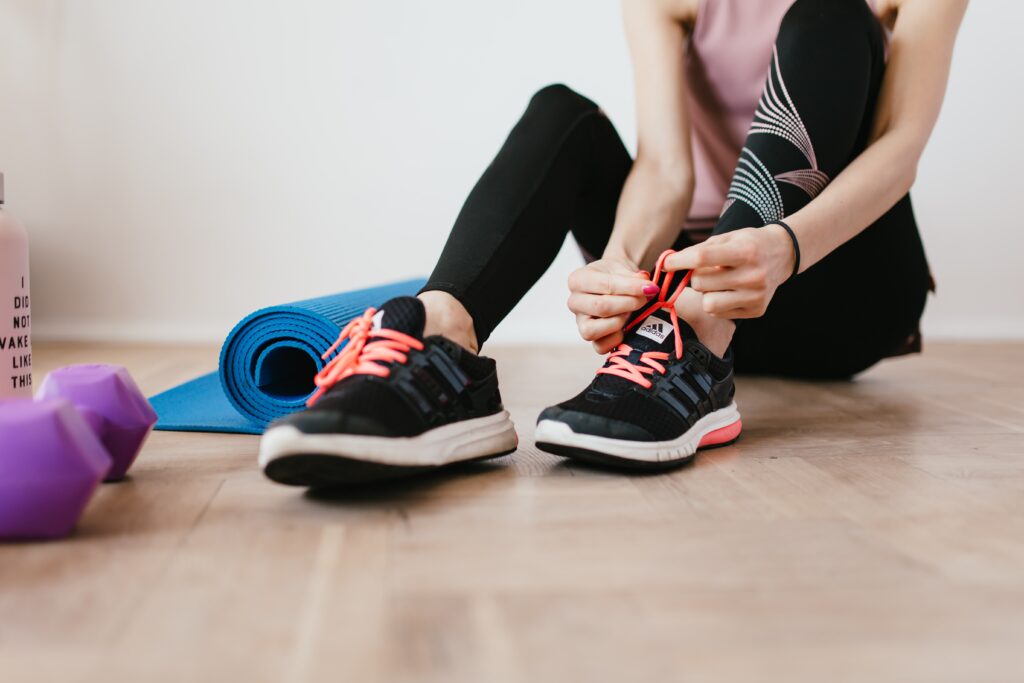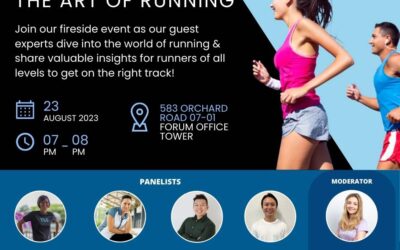Make It Happen: A Guide To Set Up A Successful Exercising Habit
Physical activity is beneficial for the body, psychological well-being and cognitive function; a recent New York Times headline even touted, “Closest thing to a wonder drug? Try exercise” (Carroll, 2016)¹.
Yet the majority of us do not engage in regular exercise. In fact, physical inactivity is labelled as the global pandemic and has been cited as one of the leading causes of death². Why is that, and how can we successfully start this beneficial activity?
The Benefits Of Exercise
Firstly, let’s establish the true benefits of exercising. Physical activity has numerous health benefits²⁻⁴ such as improvements in:
- Cardiovascular and respiratory function
- Insulin sensitivity
- Bone and muscle strength
- Cognitive function
- Resistance to type 2 diabetes
- Psychological benefits
- Better quality of life
Start Slow
International guidelines suggest 150 mins of weekly moderate intensity exercise⁵⁻⁷. While that’s the ideal amount of exercise we should strive for, as human beings, we tend to find excuses and often don’t do what is necessarily good for us.
To make your goals realistic, start slow by taking a walk in the park, walking a bit further to get lunch, swimming, yoga based exercises that include asanas and breathing techniques, doing weights or theraband exercises at home, skipping etc. Every little bit counts to being more physically active.
Be Consistent
If you already took your first step towards improving your physical wellbeing, congratulations! Now is the time to make it a habit as consistency is one of the key success factors in making exercise a beneficial part of our lifestyle and wellbeing.
While formal exercise programs at gyms are popular, these require setting aside a chunk of time to go to a gym and often have high costs associated with memberships/equipment.
Instead, try to integrate physical activity into daily life in a sustainable way, such as scheduling a time slot for a daily walk in the calendar, riding a bicycle to the grocery store, walking to meetings rather than emailing, and parking slightly further away to get your steps in.
Do we have that 1 hour of exercise time? If you allocate 8 hours for a decent sleep, 8 hours for mindful/focused work, you still have a balance of 7 hours in your day to include your exercise. It is possible!
Don’t Neglect Your Diet & Sleep
Remember that exercise cannot outlive a bad diet as it is a lot easier and faster to consume calories than it is to burn them off. Besides, physical activity reduces risks of cardiovascular disease and diabetes beyond that produced by losing weight through only dieting.
The good news is that working out has a stabilising effect on sugar craving, so exercising regularly should help you choose healthier food options and allow you the occasional indulge by choice⁸.
Also, sleep is like a reset button and essential to recovery. Many often forget that recovery is just as important as the exercise itself. Exercise, even in low levels, is beneficial to sleeping well, however avoid exercising within 2-3 hours before going to bed as this will make it harder to sleep due to increases in heart rate and body temperature⁹.
Getting Started with Your Physio
As movement specialists, a physical therapist is the ideal expert to support you on your exercising journey.
If you are currently or were previously injured, or if you’re suffering from any conditions, your physiotherapist will be able to guide you through exercising around your current limitations while also building up your body’s resilience to allow you to fully participate in whatever activity you wish.
Exercise that is suitable for you will take into account your current function, preference and previous exposure (e.g. never trained before to ex-college athlete) to exercise to ensure long term sustainability.
A personalised approach using low-cost behavioural strategies encourages an active lifestyle and achieves long-lasting behaviour change among those who are at risk of poor health outcomes such as cognitive or physical impairments or mental health issues¹.
Easy Exercises To Get You Started
Let’s learn some useful movements that target areas of the body that often become loaded and tight.
1. Backward – Forward Bends
2. Hamstring Stretch
3. Truncal Side Stretch
4. Chest Stretch
5. Tricep Stretch
6. Lying Twist
7. Bridge
8. Cat Cow
9. Plank (With Various Modifications)
References:
- Lachman ME, Lipsitz L, Lubben J, Castaneda-Sceppa C, Jette AM. When Adults Don’t Exercise: Behavioral Strategies to Increase Physical Activity in Sedentary Middle-Aged and Older Adults. Innov Aging. 2018 Jan;2(1):igy007. doi: 10.1093/geroni/igy007. Epub 2018 Apr 5. PMID: 30003146; PMCID: PMC6037047.
- Kohl, H. W., Craig, C. L., Lambert, E. V., Inoue, S., Alkandari, J. R., Leetongin, G., & Kahlmeier, S. (2012). The pandemic of physical inactivity: Global action for public health. The Lancet, 3800, 294–305. doi:10.1016/S0140-6736(12)60898-8
- Corder, K., Ogilvie, D., & van Sluijs, E. M. (2009). Invited com- mentary: Physical activity over the life course–whose behavior changes, when, and why? American Journal of Epidemiology, 170, 1078–1081; discussion 1082. doi:10.1093/aje/kwp273
- Powell, K. E., Paluch, A. E., & Blair, S. N. (2011). Physical activity for health: What kind? How much? How intense? On top of what? Annual Review of Public Health, 32, 349–365. doi:10.1146/ annurev-publhealth-031210-101151
- https://assets.publishing.service.gov.uk/government/uploads/system/uploads/attachment_data/file/832868/uk-chief-medical-officers-physical-activity-guidelines.pdf
- https://www.health.govt.nz/your-health/healthy-living/food-activity-and-sleep/physical-activity/how-much-activity-recommended
- https://www.healthhub.sg/sites/assets/Assets/PDFs/HPB/PhysicalActivityPDFs/NPAG_Professional_Guide.pdf
- https://www.healthed.govt.nz/resource/healthy-eating-active-living#A%20healthy%20bodyweight
- https://painhealth.csse.uwa.edu.au/pain-module/sleep-and-pain/

